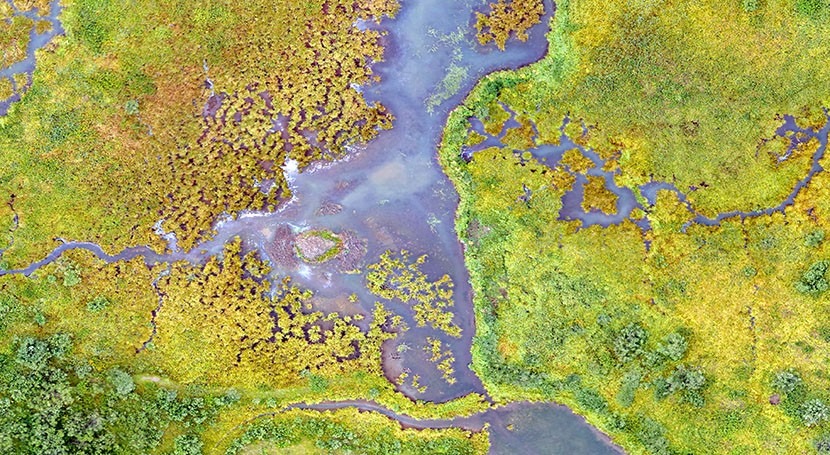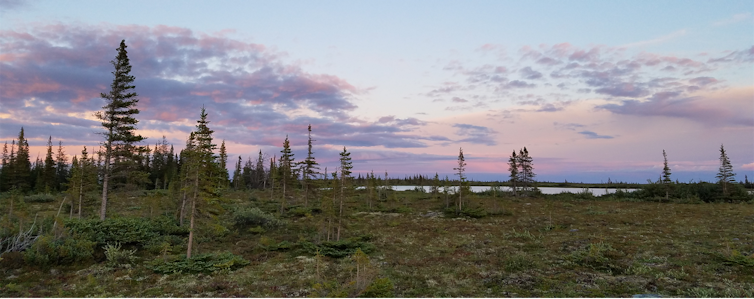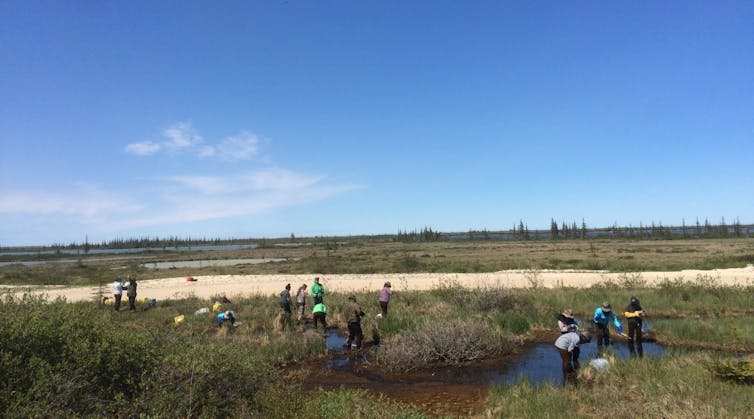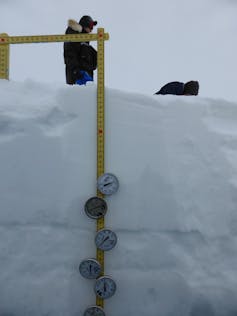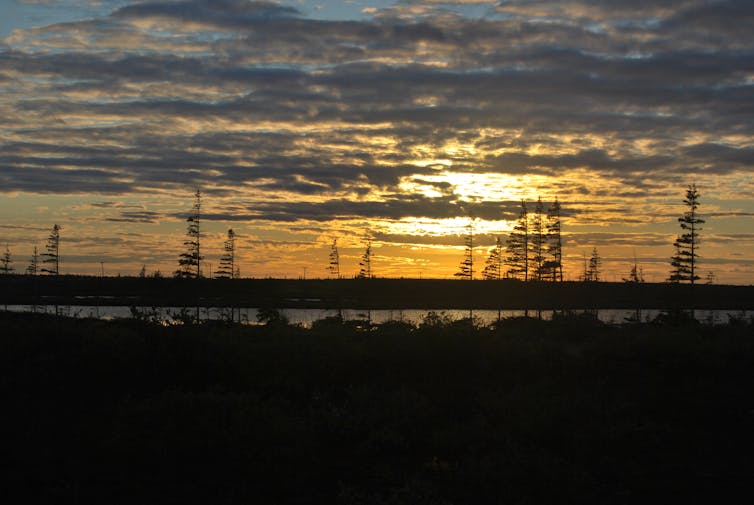The starkly beautiful Hudson Bay Lowlands, located between the Canadian Shield and Hudson Bay, are covered in carbon-rich peat and dotted with small ponds as far as the eye can see.
Wildlife enthusiasts travel to this pancake-flat landscape to spot migratory birds, baby beluga whales and the iconic polar bears that congregate near Churchill, Man., every fall as they wait for the ice on Hudson Bay to return.
This environment is among the fastest warming regions on the planet, with temperature increases projected to be up to three times higher than the global average. This amplified warming is rapidly and drastically affecting the environment.
However, our recently published research shows these effects are not the only consequences of the changing climate. The ways in which snow, water, plants and animals here interact are also affected in the process.
An ecological intersection
The Hudson Bay Lowlands sit at the intersection of several key ecological zones.
To the south lies the boreal forest, a region with abundant coniferous trees. To the north lies the tundra, where vegetation is sparse and the soils remain frozen throughout the year.
The marine system of Hudson Bay exerts a strong control on the weather and climate of the terrestrial landscape as the onshore winds bring cool air inland.
The intersection of these ecological zones has provided a unique opportunity to examine the ecological impacts of climatic change across these transition zones.
So what will happen to the ponds and the trees as the continuous permafrost thaws? Will the boreal forest push northwards as temperature rises? How will that affect the fauna here? With the rapid rate of climate change in northern ecosystems, these questions become even more critical.
Climate change is disrupting aquatic habitats
One of the few amphibians that can survive the harsh winter conditions of boreal and subarctic areas is the wood frog, a prime example of organisms poised to feel the effects of climate change in the region.
But these frogs need up to two months to develop from tadpoles and grow before the onset of summer. As the changing climate in the region shortens the window of time between snowmelt and the beginning of summer, frogs may be smaller when they emerge.
Their survival may then depend on the ability to make use of the longer summer foraging season to prepare to survive their first winter the following year.
Further, changing rainfall patterns and increased evaporation, brought on by a warming climate, could lead to changes in the length of time that ponds and wetlands in the region hold water, leading to challenges for both tadpoles and adult frogs.
Changing landscapes
Subarctic ecosystems maintain the ability to respond to and adapt to these climatic changes. This ability can also highlight the interconnection between different parts of the landscape — for instance, the connection between trees and snow. Trees are battered by cold blowing snow and ice crystals over the winter months, but also benefit from the moisture recharge of the snowmelt into the soils in spring.
As temperatures rise, the boreal forest treeline could potentially move northwards by hundreds of kilometres, dramatically shifting the plants and animals who live in these regions.
Research has found that increased tree growth in this region is strongly correlated with higher temperatures, particularly in the autumn, as warm temperatures can give the trees a headstart in the following spring.
Other unique features on the landscape like tree islands can further accelerate these changes. These islands, made up of clustered groups of trees, act as snow fencing and trap a winter’s worth of snow. This can make the environment more favourable for tree growth by providing moisture through snowmelt into the spring, and insulating the ground from the extreme cold air temperatures through the winter.
A path forward in an uncertain future
The Hudson Bay Lowlands is an iconic Canadian landscape, but one where the climate is changing rapidly. The terrestrial ecosystems are fragile, interconnected webs of snow, water, plants and animals.
And while we are certain that climate change will continue to affect the world around us, we are equally uncertain of the ways the subarctic will respond to these changes.
For the Hudson Bay Lowlands, one such tipping point will be when temperatures rise above 0 C, disrupting many frozen parts of the landscape including permafrost, sea ice and snow. Climate projections show that the mean annual air temperature in Churchill will cross this mark by approximately the year 2080. Of all of seasons, the winter is warming most rapidly and more often will cross this 0 C threshold, contributing to unknown changes through unprecedented midwinter melt and thaw events.
Other causes of uncertainty are extreme weather events like the heat waves regularly seen in southern Canada and increasingly frequent summer storms. Such extreme weather can exacerbate pond drying through increased evaporation.
The impacts of climate change on these ecosystems can be complex, so it’s important to synthesize what we know of the flora and fauna to understand how the region will change.
The future climate of this region is in our hands and the choices we make to limit greenhouse gas emissions will impact these remote regions and help shape the ecology in the future.
![]()
Matt Morison, Adjunct Professor, Geography, University of Winnipeg y Nora Casson, Canada Research Chair in Environmental Influences on Water Quality, University of Winnipeg
This article is republished from The Conversation under a Creative Commons license. Read the original article.



